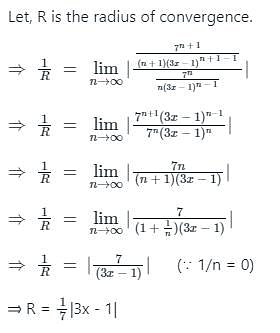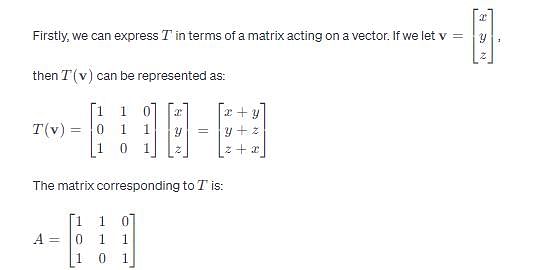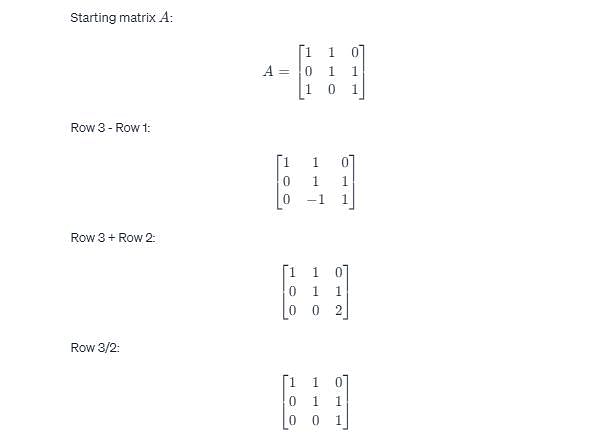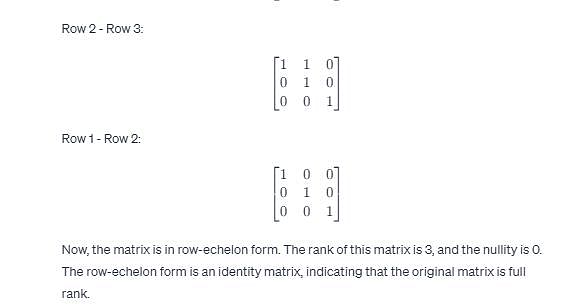Math - 2014 Past Year Paper - IIT JAM MCQ
30 Questions MCQ Test IIT JAM Past Year Papers and Model Test Paper (All Branches) - Math - 2014 Past Year Paper
Let f(x) = |x2 – 25| for all x ∈ R. The total number of points of R at which f attains a local extremum (minimum or maximum) is
The coefficient of (x – 1)2 in the Taylor series expansion of f(x) = xex (x ∈ R) about the point x = 1 is
| 1 Crore+ students have signed up on EduRev. Have you? Download the App |
For a, b, c ∈ R, if the differential equation (ax2 + bxy + y2)dx + (2x2 + cxy + y2)dy = 0 is exact, then
If f(x, y, z) = x2y + y2z + z2x for all (x, y, z) ∈ R3 and then the value of
at (1, 1, 1) is
Let G be a group of order 17. The total number of non- isomorphic subgroups of G is
Which one of the following is a subspace of the vector space R3 ?
Let T : R3 → R3 be the linear transformation defined by T(x, y, z) = (x + y, y + z, z + x) for all (x, y, z) ∈ R3. Then
Let f: R → R be a continuous function satisfying for all x ∈ R . Then the set
is the interval
Directions: Q.11 – Q.35 carry two marks each.
The system of linear equations
x – y + 2z = b1
x + 2y – z = b2
2y – 2z = b3
is inconsistent when (b1, b2, b3) equals
be a matrix with real entries. If the sum and the product of all the eigenvalues
of A are 10 30 respectively, then a2 + b2 equals
Consider the subspace W = {(x1, x2, ..., x10) ∈ R10 : x n = xn–1 + xn–2 for 3 ≤ n ≤ 10} of the vector space R10. The dimension of W is
Let y1(x) and y2(x) be two linearly independent solutions of the differential equation
x2 y”(x) – 2xy’(x) – 4y(x) = 0 for x ∈ [1, 10].
Consider the Wronskian W(x) = y1(x)y2’(x) – y2(x)y1’(x). If W(1) = 1, then W(3) – W(2) equals
The equation of the curve passing through the point ,(π/2, 1) and having slope at each
point (x, y) with x ≠ 0 is
The value of α ∈ R for which the curves x2 + αy2 = 1 and y = x2 intersect orthogonally is
Let {xn} be a sequence of real numbers such that where c is a positive real number. Then then sequence {xn /n} is
Let S = [0, 1] ∪ [2, 3) and let f : S → R be defined by
If T = {f(x) : x ∈ S}, then the inverse function f–1 : T → S
Let f(x) = x3 + x and g(x) = x3 – x for all x ∈ R. If f–1 denotes the inverse function of f, then the derivative of the composite function g o f–1 at the point 2 is
Let f : R → R be a function with continuous derivative such that f ( √2 ) = 2 and f(x) =
for all x ∈ R. Then f(3) equals
If C is a smooth curve in R3 from (–1, 0, 1) to (1, 1, –1), then the value of
is
Let C be the boundary of the region R = {(x, y) ∈ R2 : –1 ≤ y ≤ 1, 0 ≤ x ≤ 1 – y2} oriented in the counterclockwise direction. Then the value of
Let G be a cyclic group of order 24. The total number of group isomorphism’s of G onto itself is
|
29 docs|48 tests
|
|
29 docs|48 tests
|






















